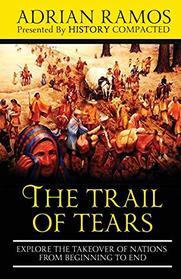The author of this book writes so eloquently of the tragedy of Indian removal programs that it is often hard to read. The US government used these programs to wrest away land ownership from Indians for new settlers. It is particularly hard to read about the 5 Civilized Tribes and their treatment by the government.
I've read other books about some of these individuals (of the Five Civilized Tribes) who tried to stay on their own land and had assimilated as much as possible (wearing Anglo clothing, learning to read and write, adopting Christianity, seeking US citizenship). Their forefathers had fought with the Americans in the Revolutionary War and had done everything asked of them. Still, in the end, they were forced to leave their large farms -- because they were Indians and they owned valuable lands.
The author makes a fascinating point: The relationships between the Indians and the US government were often amicable. However, the relationships between the Indians and the state governments were not. This was a point in our history where states' rights vs. federal rights were still being argued over and would continue until our Civil War. A state was much more likely to infringe on an Indian tribe's rights; recourse in the state courts was seldom resolved in the Indian's favor.
Thank you for the tribal flags of the Indian nations shown. It shows that the tribes still share a cultural (and political) identity. A few years ago, I was traveling in New Mexico and Arizona. Someone I was speaking with pointed out several Indians traveling on the airplane with us. She mentioned that the Indians, as a group, are the most educated group around and that they seek changes within the system (getting governmental jobs, etc.). Perhaps they have decided to fight the system from within.
I've read other books about some of these individuals (of the Five Civilized Tribes) who tried to stay on their own land and had assimilated as much as possible (wearing Anglo clothing, learning to read and write, adopting Christianity, seeking US citizenship). Their forefathers had fought with the Americans in the Revolutionary War and had done everything asked of them. Still, in the end, they were forced to leave their large farms -- because they were Indians and they owned valuable lands.
The author makes a fascinating point: The relationships between the Indians and the US government were often amicable. However, the relationships between the Indians and the state governments were not. This was a point in our history where states' rights vs. federal rights were still being argued over and would continue until our Civil War. A state was much more likely to infringe on an Indian tribe's rights; recourse in the state courts was seldom resolved in the Indian's favor.
Thank you for the tribal flags of the Indian nations shown. It shows that the tribes still share a cultural (and political) identity. A few years ago, I was traveling in New Mexico and Arizona. Someone I was speaking with pointed out several Indians traveling on the airplane with us. She mentioned that the Indians, as a group, are the most educated group around and that they seek changes within the system (getting governmental jobs, etc.). Perhaps they have decided to fight the system from within.




